

How can a new employee quickly understand the business model of a new company or new industry? How can an investor quickly understand a company or new business? How can an entrepreneur quickly understand the business prospects of a new business or new business model?
I recommend you to use the business model canvas, which allows you to easily see through the business model. It is of great value to new employees, investors who want to quickly understand a field, and entrepreneurs who want to know whether a project has business prospects.
Business Model Canvas is a universal language proposed by Alexander Osterwalder in Business Model Generation to describe, visualize, evaluate and change business models. It consists of 9 modules and helps entrepreneurs clarify the tools to "provide unique value to segmented customers", thereby generating creativity, reducing speculation, ensuring that they find the right target users and solving problems reasonably.
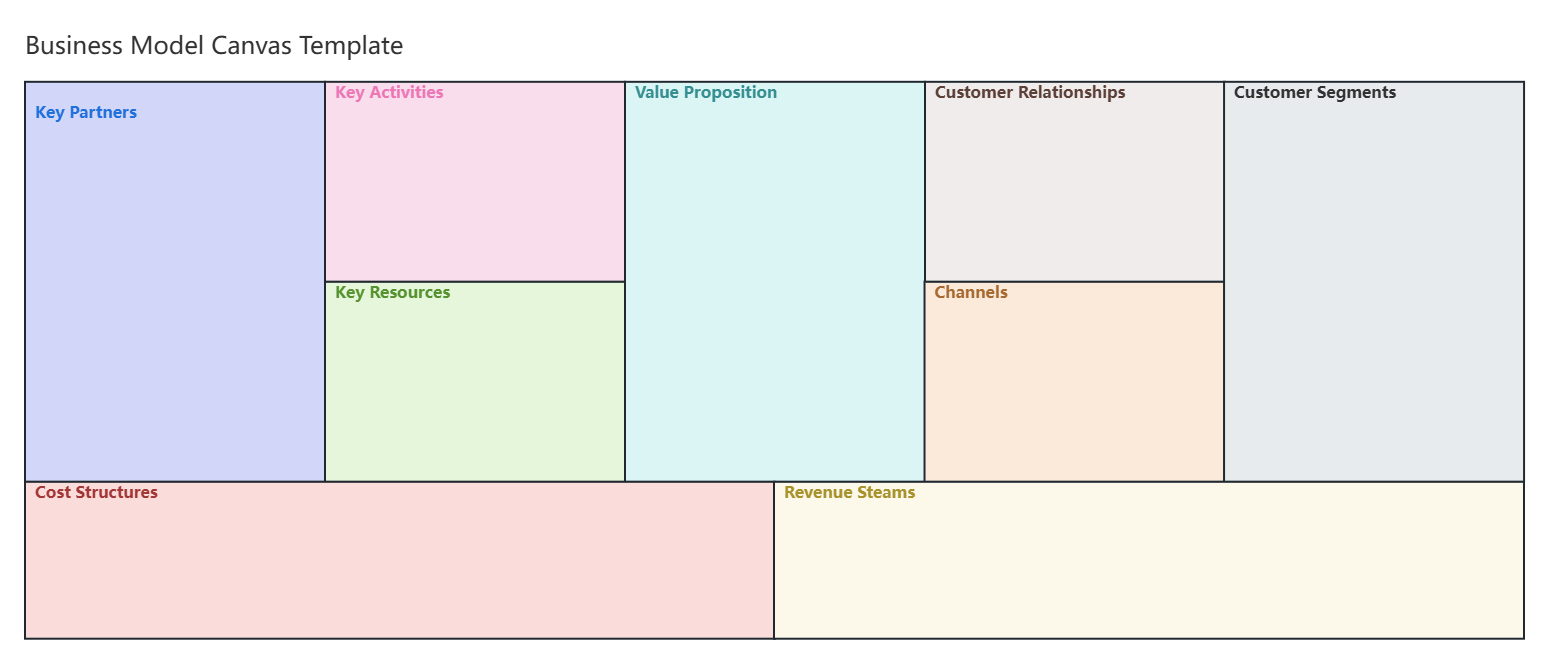
Simply put, the business canvas helps you analyze whether your business model can help your product survive through the above nine module factors.
The core nine-square grid of the business canvas can help company entrepreneurs, business leaders, investors, etc. clarify four key issues:
1) Obtain the needs and core value points of the core user groups
2) Better assessment of core resources needed
3) Identify key effective behaviors and methods
4) Sort out a clearer cost structure and calculate the input-output ratio
Next, let’s talk about the nine-square grid of the business canvas:
1. Customer Segments: Who do we provide services for? For whom do we create value? Who are our important customers?
Any enterprise or organization will serve one or more customer groups, but no one product or service can meet the needs of the entire population. Product planning should make it clear which customer segments/user groups the service will serve.
2. Value Propositions: What kind of products or services do we provide to our customers? The value proposition of a company is to solve customer problems and meet customer needs.
3. Channels: What channels do we use to convey (sell) our value proposition (product) to customers? Channels are the way to convey the company's value proposition to customers through communication, distribution and sales channels.
4. Customer Relationships: How to establish contact with customers and maintain customer relationships (so that they will buy again)? Customer relationships are established and maintained in customer groups.
5. Revenue Streams: Successfully deliver the value proposition to customers and generate cash revenue from each customer segment.
6. Key Resources: What are the core competitive resources we have to achieve the supply and delivery of the above elements?
7. Key Activities: What are the key activities we need to do in order to achieve the business model and realize supply and delivery?
8. Key Partnerships: Who are the key suppliers and partners needed to make the business model work?
A good business model requires good alliances to help us obtain resources and reduce risks.
9. Cost Structure: What are all the costs required for the business model to operate effectively? The cost structure depends on the various elements of the economic model.
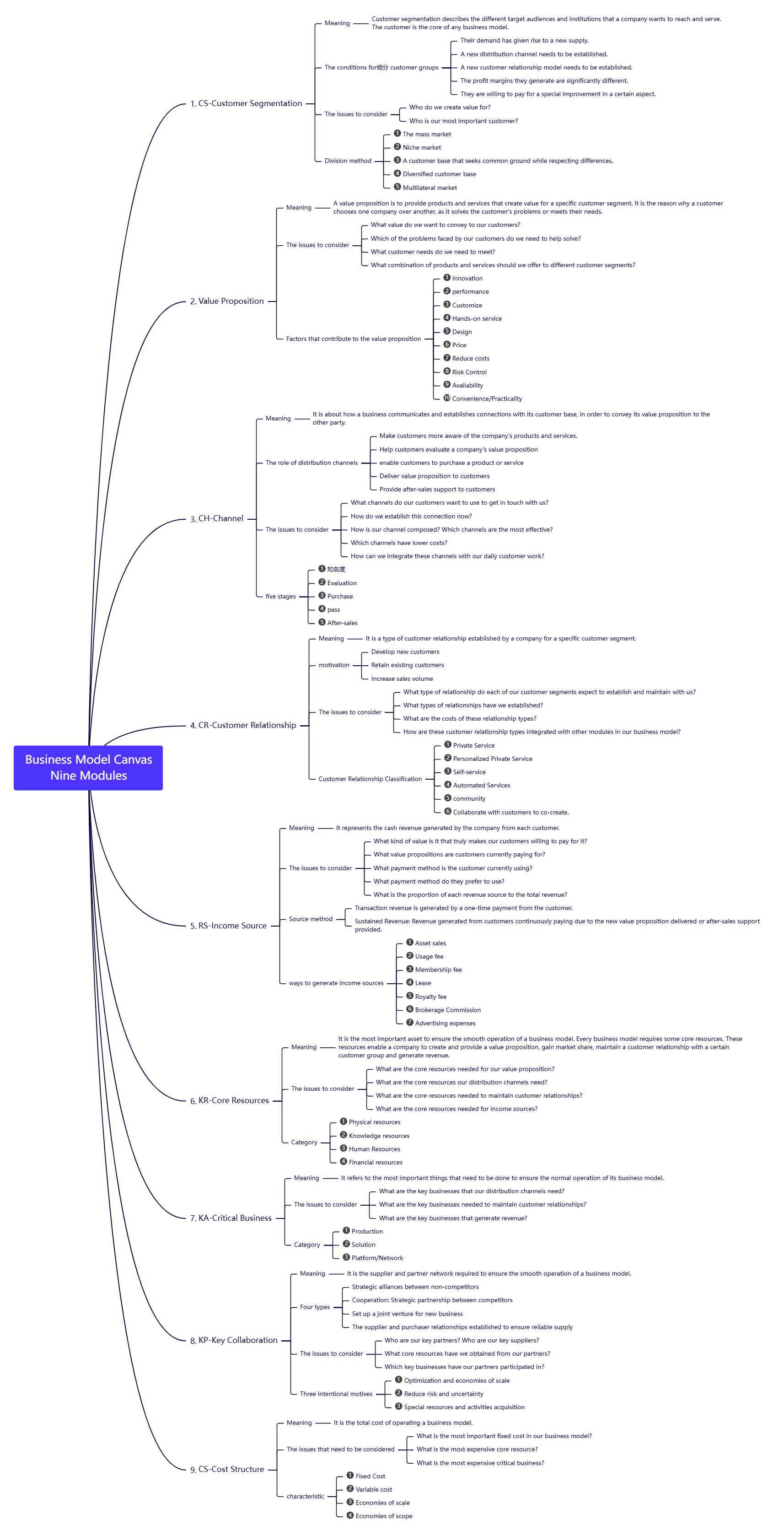
Nine modules of the business model canvas
The above is a detailed introduction to the Business Canvas Nine-square Grid. To help you understand it more quickly, we will now use cases to introduce the application of the Business Canvas in actual business activities.
The business canvas standardizes the core elements of the business model, and then helps us visualize the relationship between analysis modules through a nine-square graphical method. Next, we will use the business models of five companies as examples.
1)Tesla Business Canvas
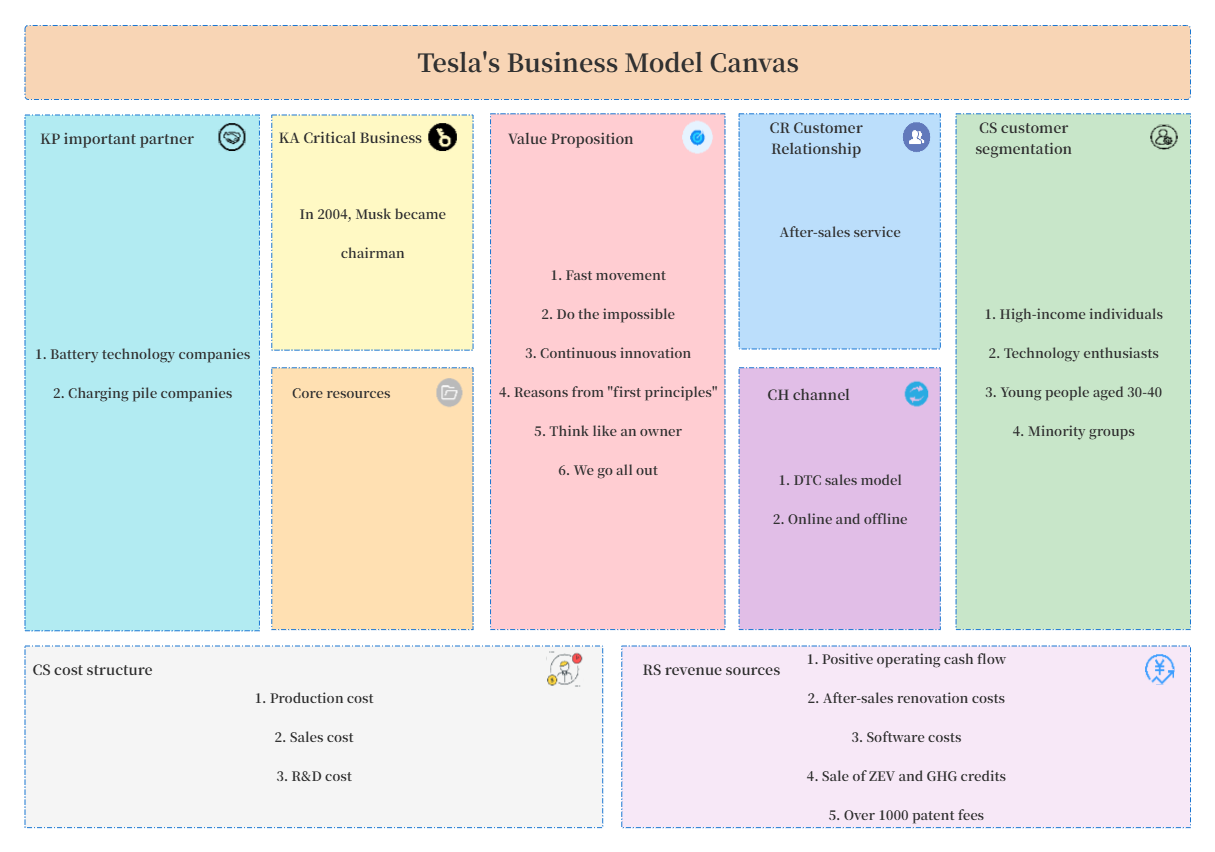
Tesla Business Model Canvas Example
Tesla is a multinational company in the electric vehicle and clean energy industries. Tesla's business model canvas clearly shows its customer-centric, technologically innovative, and direct-operated business model. This business model not only helps Tesla establish a leading position in the electric vehicle market, but also lays a solid foundation for the company's long-term development.
2) Starbucks Business Model Canvas
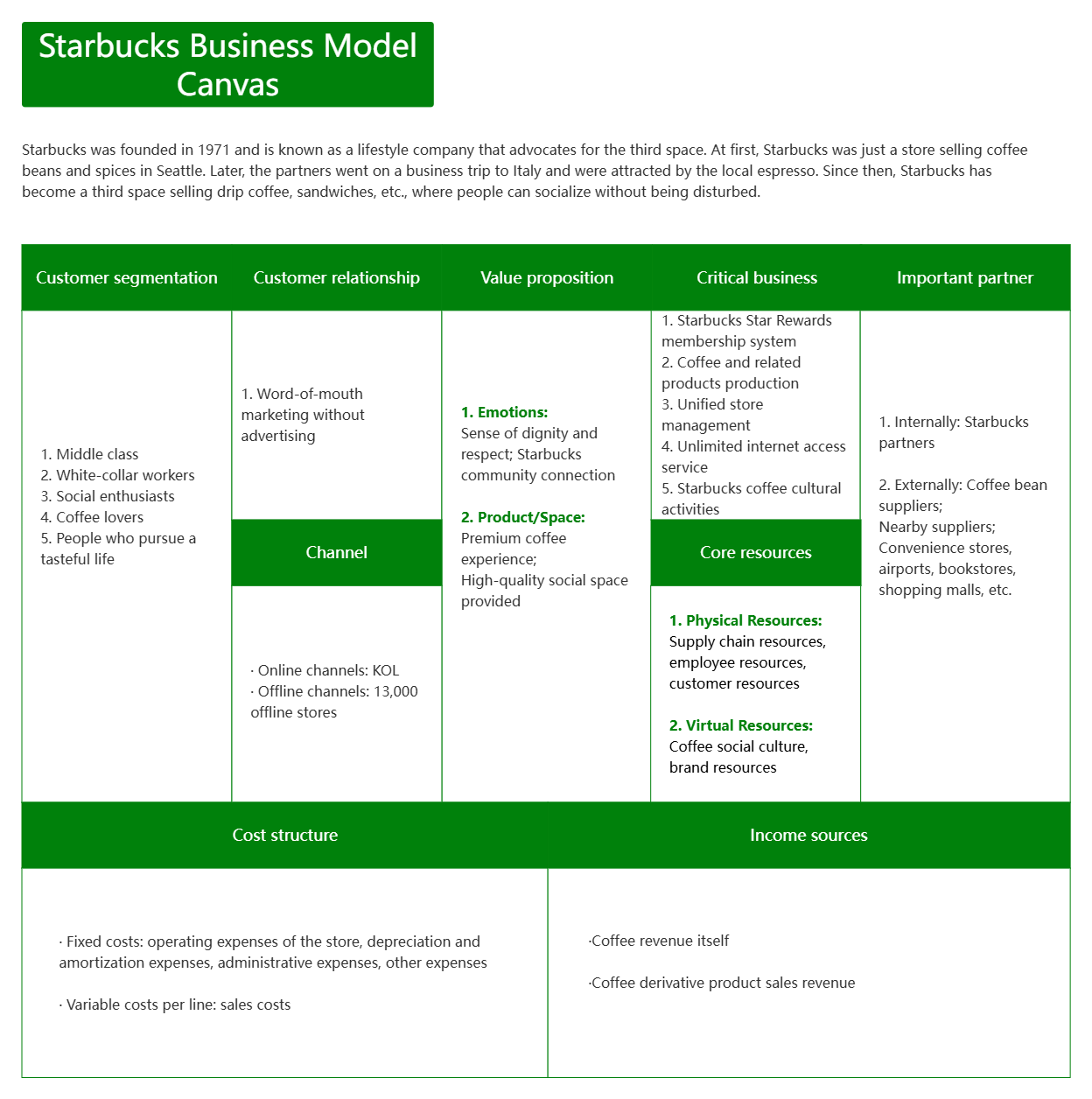
Starbucks Business Model Canvas
Starbucks is a very important case in the history of world business. It is a new retail service provider that creatively integrates coffee with the third space. Its success can be clearly seen through 9 elements in one picture, such as its value proposition, customer base, core resources, cost structure and revenue sources. These are the key factors that constitute Starbucks' success.
3) IKEA Business Model Canvas
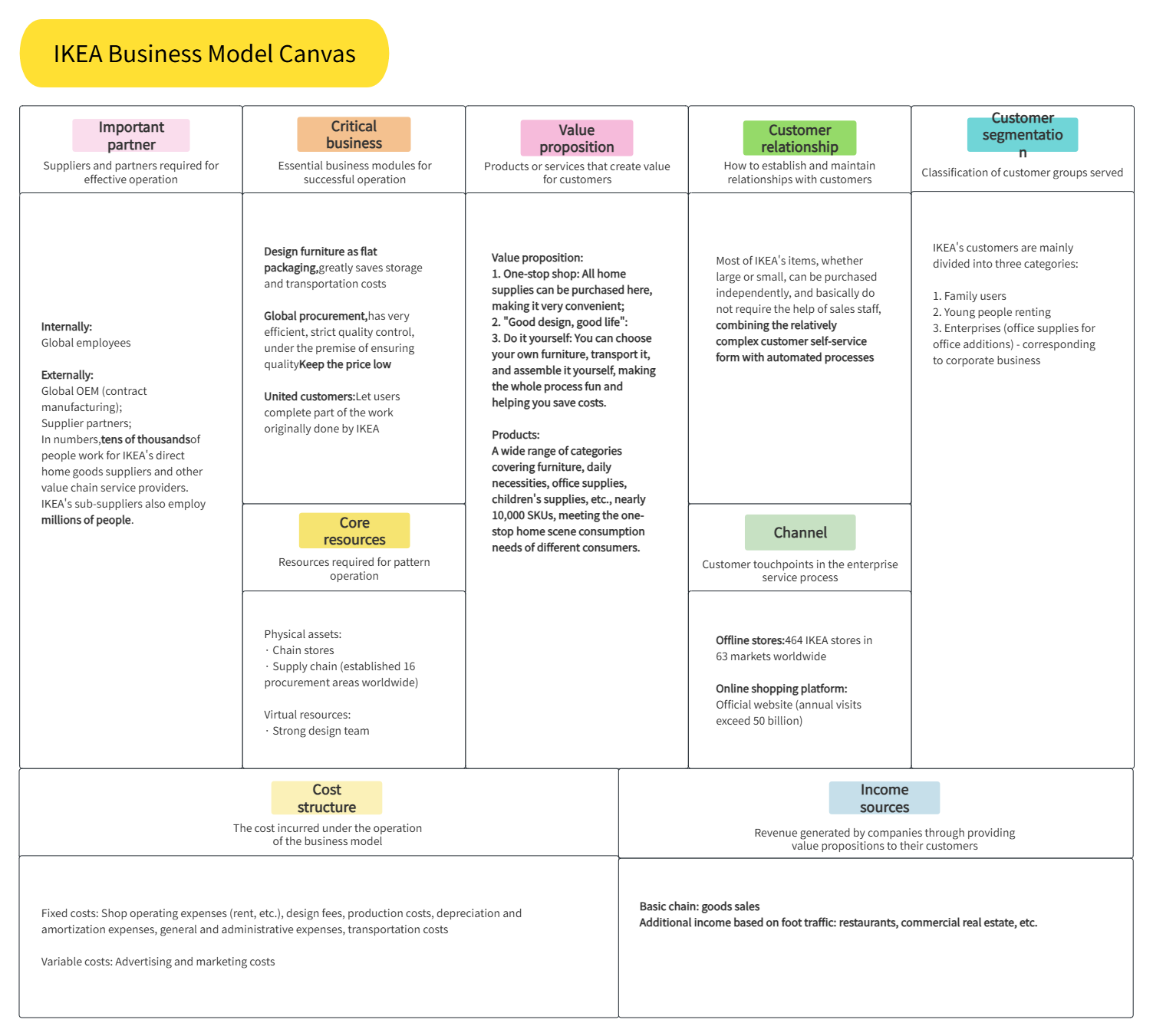
Many people love to visit IKEA. Some like its model rooms, some like to buy all furniture from it in one stop, some like its product design and favorable prices, and some like its shopping experience. The key factors that make IKEA stand out from many home furnishing brands are all in this picture.
4) Alibaba Business Canvas
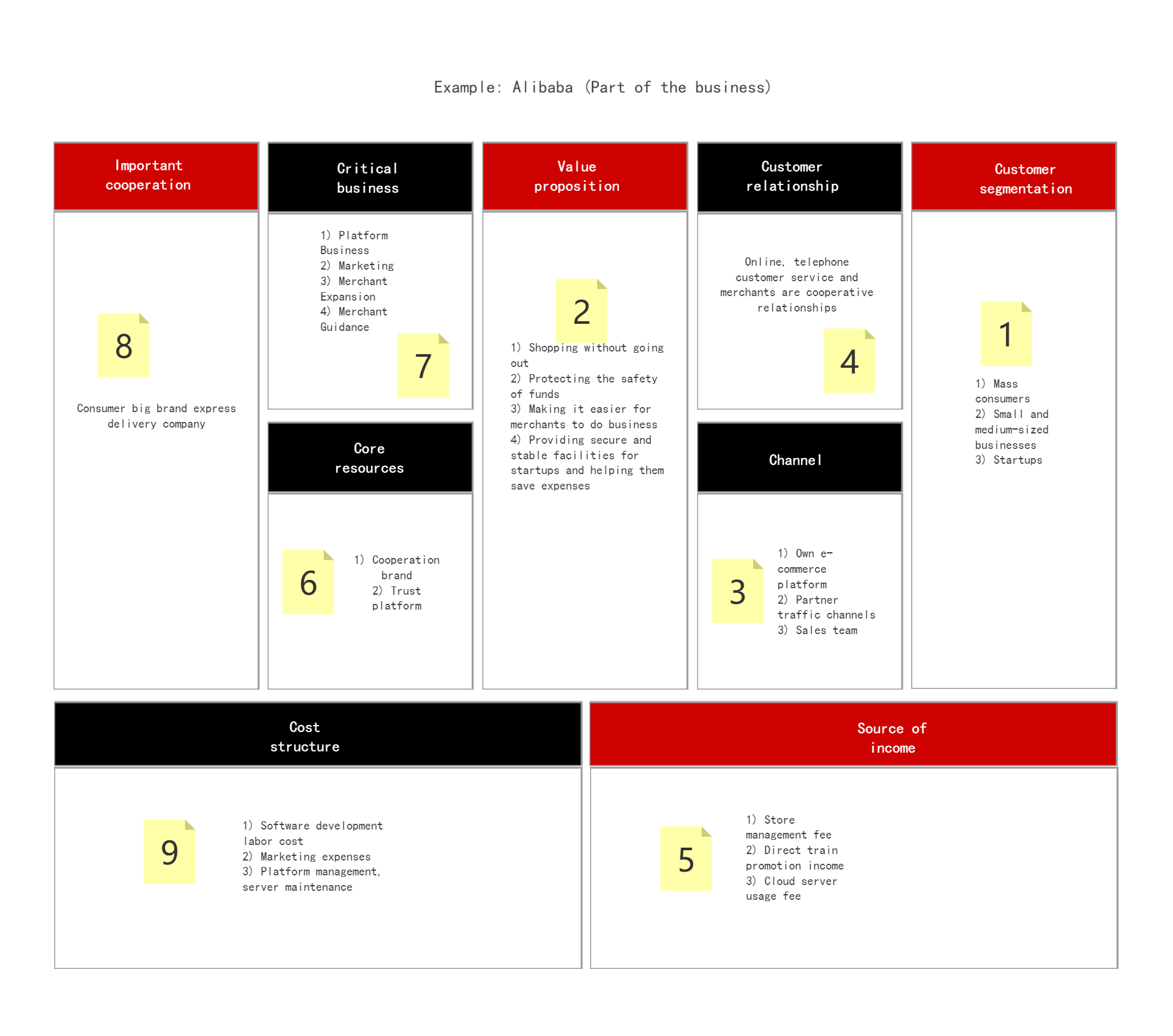
Alibaba is an e-commerce shopping platform that is frequently used by many people. Its value proposition is to enable people to shop without leaving their homes, to make it easier for merchants to do business, and to provide startups with safe and stable facilities to save costs. Its service groups are mainly mass consumers, small and medium-sized merchants, and startups. It realizes its value proposition through a series of methods around these groups.
5) Business Canvas of a Low-Cost Airlines
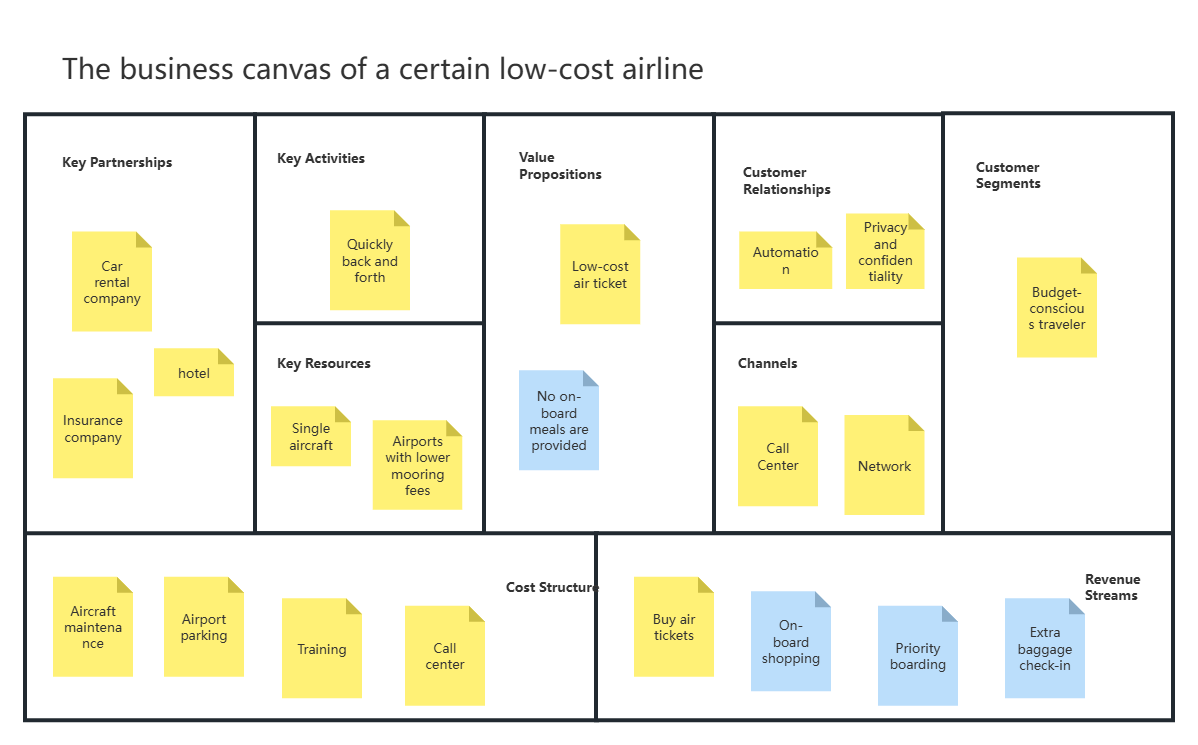
The business canvas of a certain low-cost airline
The value proposition of this low-cost airline is very clear, which is to provide cheap air tickets for travelers who successfully control their budget. Car rental companies, hotels and insurance companies make them important partners. They mainly obtain income through ticket sales, in-flight shopping, additional checked baggage and other services. As long as they can cover the costs of aircraft maintenance, airport parking, training, etc., they can achieve good business operations.
After the introduction of the above cases, I believe everyone has learned how to make an enterprise business model canvas. The editor has prepared several basic templates of business model canvas for everyone, which can be directly cloned and used.
1. Business Canvas Template
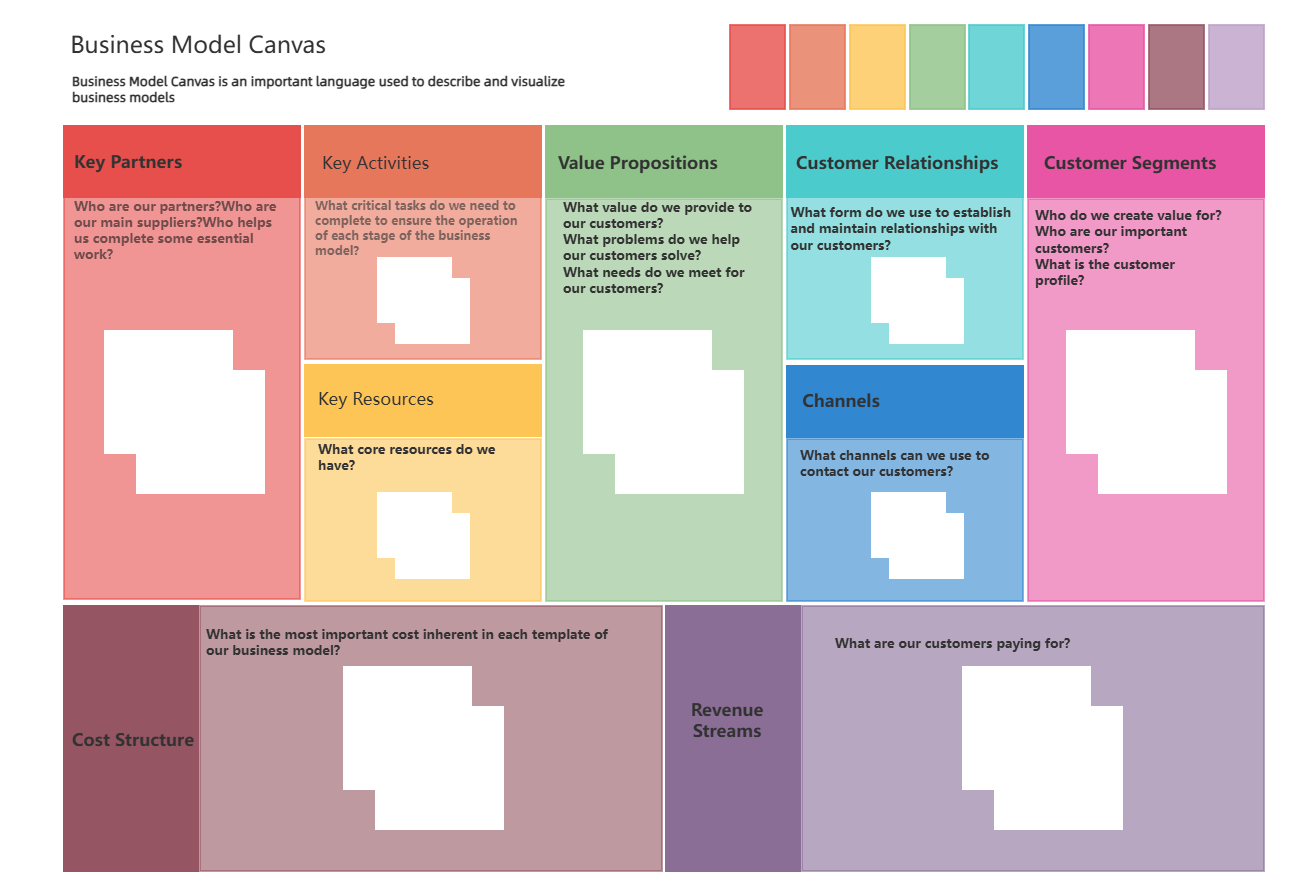
Business Model Canvas - Color Style
2. Business Model Canvas
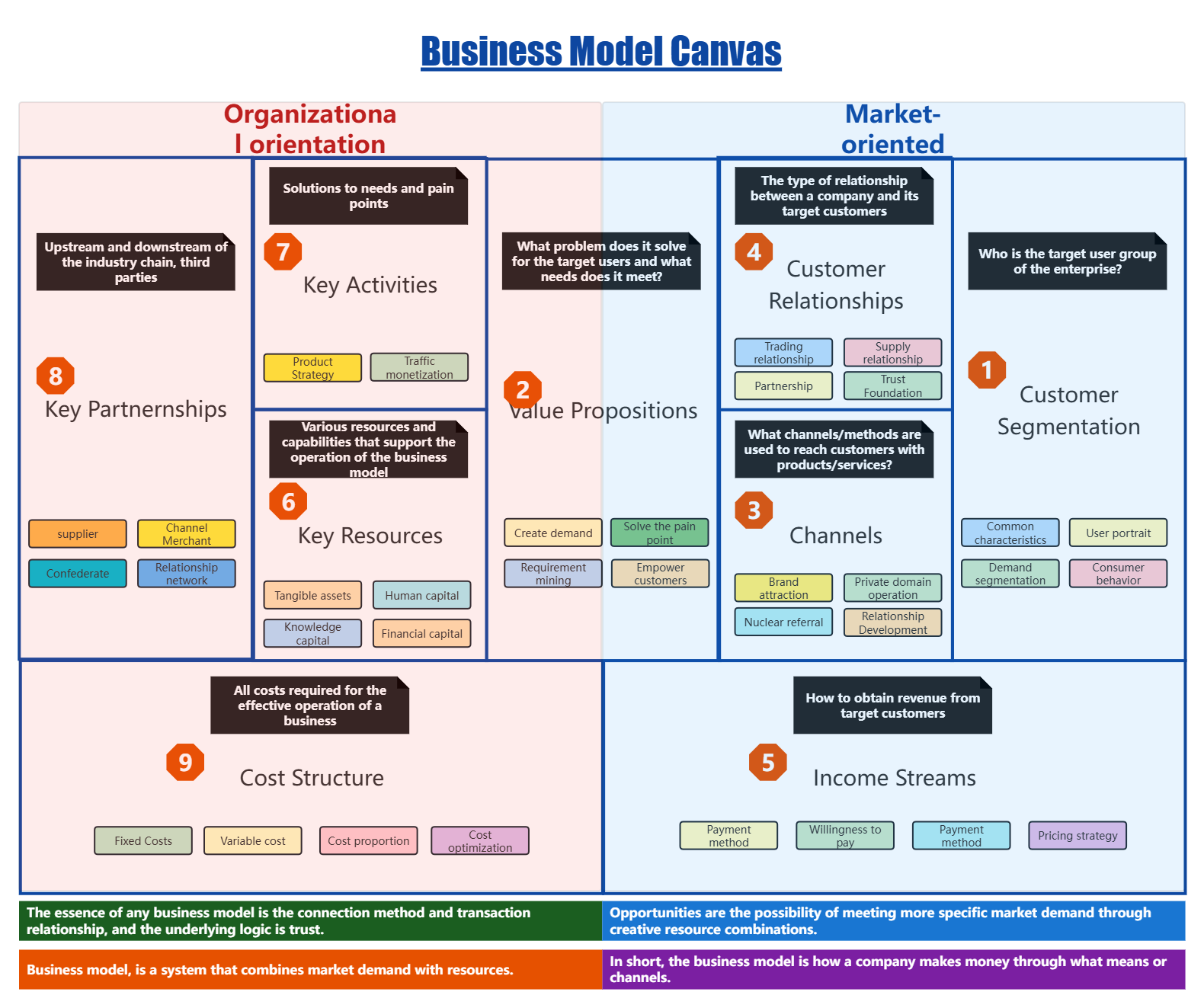
Business Model Canvas Template
3. Business Model Canvas

【Business Analysis Tool】Business Model Canvas Analysis Framework
4. Personal Business Model Canvas
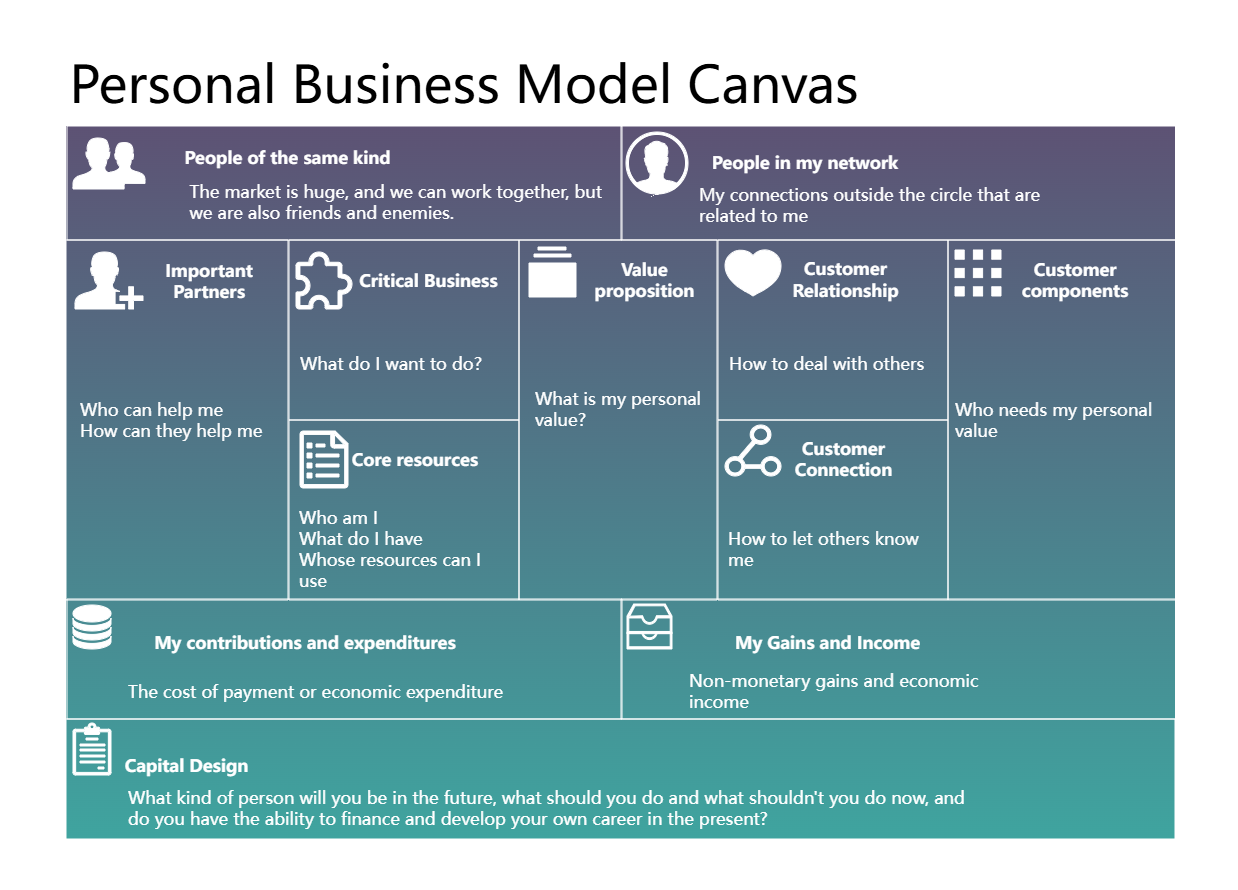
Personal Business Model Canvas
The above templates are all from the ProcessOn template library . You are welcome to master a new business analysis capability while reading them.
As a powerful tool, the Business Model Canvas can not only help enterprises clearly present their business models, but also guide them to discover potential problems and improvement points, thereby promoting their innovation and development. In the future business competition, mastering the application skills of the Business Model Canvas will become the key to maintaining the competitiveness of enterprises.